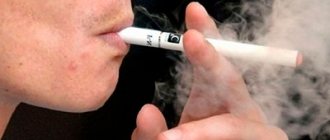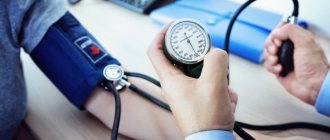Thyroiditis
is a medical term for inflammation of the thyroid gland.
In the practice of an endocrinologist you can find the following varieties:
- Chronic autoimmune;
- Subacute;
- Spicy.
In this article we will look at the second type. It is also called De Quervain's thyroiditis or granulomatous.
Why is thyroiditis dangerous?
Subacute thyroiditis is caused by viruses that cause destructive (destructive) damage to the thyroid gland. It is characterized by a 4-phase flow. Patients report severe pain in the neck area and symptoms of acute infection.
Subacute thyroiditis accounts for approximately 5% of all thyroid pathology. More often diagnosed in women. It is registered in various age groups, but the peak incidence occurs between 30-60 years. It also has seasonality (autumn, summer).
Diagnosis of thyroiditis
- When collecting an anamnesis of the disease, an episode of acute respiratory viral infection is noted approximately 20-30 days before the onset of the disease.
- During an objective examination, palpation of the thyroid gland is difficult, since the patient has severe pain. The gland is dense and painful.
- Symptoms of thyrotoxicosis are noted in both physical and emotional aspects (sweating, rapid heartbeat, irritability).
- According to laboratory tests, a typical manifestation of subacute thyroiditis is a significant increase in the level of ESR (up to 50-70 mm/l) in the CBC with a normal level of leukocytes, but moderate lymphocytosis. An elevated ESR level has its diagnostic value only at the onset of the disease.
- An important indicator of the destructive process that develops in the thyroid tissues is an increase in the level of C-reactive protein.
- In the initial stages (acute, thyrotoxic), there is a transient increase in the level of T3-free and T4-free against the background of a reduced level of TSH. In order to exclude hypothyroidism, the TSH concentration is re-determined after a month, then after six months.
- Carrying out a radioisotope research method - reducing the uptake of 99mTc.
- Ultrasound of the thyroid gland reveals unclear and limited hypoechoic areas.
- An important diagnostic criterion is the rapid effect of glucocorticoid therapy (Kreil test).
Four stages of De Quervain's thyroiditis
- Initial stage (acute, thyrotoxic). Lasts 3-6 weeks. It is characterized by clinical manifestations, which we reviewed earlier. According to the hormonal test, a high level of free T3 and T4 is noted against the background of a reduced level of TSH.
- Euthyroid stage. Lasts 1-3 weeks. Destroyed follicles stop producing thyroid hormones.
- Hypothyroid stage. Lasts from 2 to 6 months. Transient hypothyroidism appears.
- Recovery. Normalization of the thyroid structure and restoration of previously lost gland function.
Treatment of thyroiditis
Mild subacute thyroiditis goes away on its own within 2-6 months. The fundamental principle of treatment is symptomatic therapy - that is, the elimination of external manifestations that cause discomfort to the patient. The drugs of choice are glucocorticoids and non-steroidal anti-inflammatory drugs. In the case of transient hypothyroidism and subacute thyroiditis, HRT is indicated.
The attending physician is faced with the task of reducing pain, relieving symptoms, as well as preventing possible relapses of the disease.
Is there life after smoking?
Tobacco smoking is one of the leading causes of so-called preventable death. This fact has been reliably established, repeatedly confirmed in longitudinal studies on large samples, and is probably known to everyone. In other words, smokers actively and purposefully shorten their lives, knowing full well that this addiction is not just harmful, but literally destructive, and for several key systems of the body at once.
Many, of course, have been thinking for a long time that it’s time to give up this habit. But in most cases, two considerations stop one from taking a decisive step: abstinence is scary and the benefits are doubtful. There are already enough health hazards around, so is it worth depriving yourself of the last joy?
In fact, surveys show that many smokers fear that it will take too much time and willpower to achieve any tangible positive changes in health and well-being. However, the real scenario in this regard is much more dynamic than most people think.
The benefits of quitting smoking are felt within an hour after the last cigarette smoked - if you firmly decided that the cigarette was your last - and only good news follows.
To give up smoking. Fast Facts
Here are just the key points regarding quitting smoking. More detailed information is in the main part of the article.
* Quitting smoking means breaking the cycle of addiction (psychophysiological dependence) and radically reconfiguring the brain so that it weanses the habit of humiliating nicotine slavery.
* In order for the first attempt to quit to be successful, a person must have a clear plan to counteract provoking factors, withdrawal syndrome and the habit of reaching for a pack of cigarettes.
* The direct benefits of the decision begin to show within an hour.
* The sooner this step is taken, the faster the risk of cancer, heart and lung disease, and many other serious conditions directly related to smoking will decrease.
Time scale
If you think a little, you will easily understand why you are so irritated by endless howls, warnings and horror stories about the dangers of smoking. The point is not that there are too many anti-nicotine advertisements and they have long become boring with their dull monotony. The real reason is that all this is true, and you yourself understand that it is true, and you really don’t want to be reminded of it again and again.
In addition, you know very well what you will have to part with when you quit smoking. And you’re probably feeling sad in advance. But much less is said and written about whether you will get anything in return - and if so, what exactly. It's not fair.
Guided by the principles of evidence-based medicine, relying exclusively on data confirmed and published in reliable sources, we simply inform you about how life will develop after smoking, in what aspects and why it will change. Below is a kind of “storyboard,” as they say in Hollywood, a timeline on the editing table, a graph of events and processes in your body along the time axis.
In one hour
About 20 minutes after you smoke your [last] cigarette, your heart rate begins to drop and your circulation tries to get back into the optimal mode it has been stubbornly trying to do for all your years of smoking.
In twelve hours
Cigarettes contain many well-known toxins, including carbon monoxide, i.e. carbon monoxide, i.e. CO, i.e. carbon monoxide. It is very poisonous and especially dangerous because it is colorless and odorless; in high concentrations it is fatal, in slightly smaller concentrations it leads to serious damage to the central nervous system. The bottom line is that if you inhale a certain volume of this substance in a short time, it reacts with hemoglobin, resulting in hypoxemia (lack of oxygen in the blood) and hypoxia (general oxygen starvation of tissues and organs), in other words, suffocation.
So, if by some miracle you last twelve hours without a single cigarette, then this time will be enough for the body to get rid of excess oxygen oxide. The natural gas composition of the blood will be restored, that is, its gas exchange function will return to normal.
In a day
A day after the last cigarette smoked, the probability of the so-called gradually decreases. vascular accidents - a serious heart attack or stroke.
The predisposition to coronary heart disease in a smoker is due to a lack of so-called. “good cholesterol” (see “Medical myths. All about cholesterol”). In addition, smoking increases blood pressure, significantly increasing the likelihood of blood clots and the risk of stroke.
Even if not immediately, but within a day after quitting smoking, high blood pressure begins to steadily decrease. At the same time, the level of saturation (oxygen saturation in the blood) increases, which significantly facilitates any physical activity and “clears your head.” It’s tempting to learn some useful habit—unless, of course, you push these thoughts away—for example, start running in the morning, doing push-ups, or otherwise regaining your former shape. If you thought this was written as a joke, then no, this is quite serious and physiologically natural. You will really feel: your whole body is happy and asking for activity.
After two days
Smoking damages the nerve endings responsible for the perception of smell and taste. This, of course, cannot be compared with what the damned coronavirus can do, but the mechanism is approximately the same. So, when you quit smoking, after just a couple of days, an effect occurs that is familiar to absolutely any former smoker: a person is surprised to discover that the world around is full of smells, and food carries much more flavor nuances than was felt before.
After three days
After three days, the concentration of nicotine metabolites in the body begins to decrease significantly. Of course, it would be better if it did not increase, but since you have smoked, it is the removal of these compounds from biochemical cycles that leads to withdrawal syndrome. For some time, most former smokers become irritable, experience headaches and what seems to them an irresistible need to smoke. In fact, it can be tolerated. Very, very many people have gone through this - and are still alive!
Note translator-editor of the Lakhta Clinic. – I can competently confirm from my own experience: the consciousness that you have stood, for example, for three days, five hours and twenty minutes without cigarettes, that you continue to hold on, breathe deeply and, it seems, will still be able to break free - all these sensations strength significantly exceeds both the “pangs of withdrawal” and the dubious pleasure of smoking. This is pride, this is freedom, this is a very special drive, and you always want to talk to someone about it (though, some interlocutors get scared, irritated or downright bored, but let them be patient). There will be all sorts of other things - there will be situations, there will be temptations at every step, there will be dreams. Personally, I kept dreaming for a long time, and the dreams were of a nightmare nature: as if I had lost my temper and was smoking again…. and what a joy it was to wake up and realize that it was just a dream! A very dangerous period is when you seem to have already quit, and there seems to be nothing more to be afraid of, and one tiny little cigarette, one puff won’t hurt…. STOP. Don't believe it under any circumstances. This rubbish knows how to wait and knows how to persuade. I will share, again, my own experience - I told myself from the very beginning: you are sick, you are a drug addict in remission, now, after all, you are at war and this will be for a long time, and if you take too long, then all the previous days and the hours are canceled, and then why was all this?! And if you try to smoke in three years, you will be surprised at how disgusting it is. In general, ladies and gentlemen, it is possible and necessary to survive. So give up boldly, don’t be afraid of anything and don’t try again!
A month later
Within a month, lung function begins to gradually recover. As they heal (and they got it badly) and their breathing volume increases, the former smoker clearly notices how shortness of breath and habitual cough go away. Endurance also increases noticeably, and if a person regularly engages in exercise or other physical activity, this has a noticeable effect on the results.
In one to three months
During the first few months, normal blood circulation continues to be restored.
Nine months later
The lungs need about nine months to become more or less healthy. The fine, hair- or eyelash-like structures in the lungs are cleared of tobacco tar deposits. This is important in terms of evacuating mucus from the lungs and effectively combating infections. And, as the lungs begin to function at full capacity, the incidence of acute respiratory diseases decreases.
In a year
A year has passed since I smoked my last cigarette. The risk of coronary heart disease, of course, is not zero, but during this time it has decreased by approximately half, and continues to decline to the general population level.
In five years
And again about the numerous toxins that, as everyone knows, are contained in the smoke of smoldering dried tobacco. There are over four hundred such toxic substances. Some of them aggressively attack the walls of arteries and other blood vessels; this same group of toxins dramatically increases the likelihood of blood clots.
After five years of smoking-free life, the lumens of the blood vessels expand, and the walls regain their former tone. The risk of thrombosis and, as a result, ischemic stroke is reduced, and this healing process will continue over the next ten years.
After ten years
After ten years, the likelihood of developing lung cancer and related premature death is reduced by about half compared with those who continue to smoke. The risk of cancer of the oral cavity, larynx, and pancreas is also significantly reduced.
Fifteen years later
After fifteen years of complete smoking cessation, the probability of coronary heart disease is compared with the average level of this indicator for non-smokers. The same goes for the risk of pancreatic cancer.
Twenty years later
After twenty years, the risk of premature death from causes clearly and reliably associated with smoking, including cancer and pulmonary diseases, decreases to the statistical level characteristic of samples of people who have never smoked.
Eventually
Smoking is not just a “bad habit”. This is a very dangerous addiction, leading to serious illness and premature death. When a person quits smoking, self-cleansing and restoration processes immediately and guaranteed begin in his body, which over time leads the main systems to a state characteristic of non-smokers and never smokers.
Some positive effects, such as normalization of blood pressure, occur almost immediately. Others, for example, reducing cardiac, pulmonary, and oncological risks, acquire significance after several years. However, it is important to understand that your health and medical prospects will improve with every day, month, and year you live without cigarettes - improve constantly and regardless of you.
Give it up.
Based on materials from Medical News Today
See also the articles “Lung Cancer” and “Medical Myths. Lung cancer".










